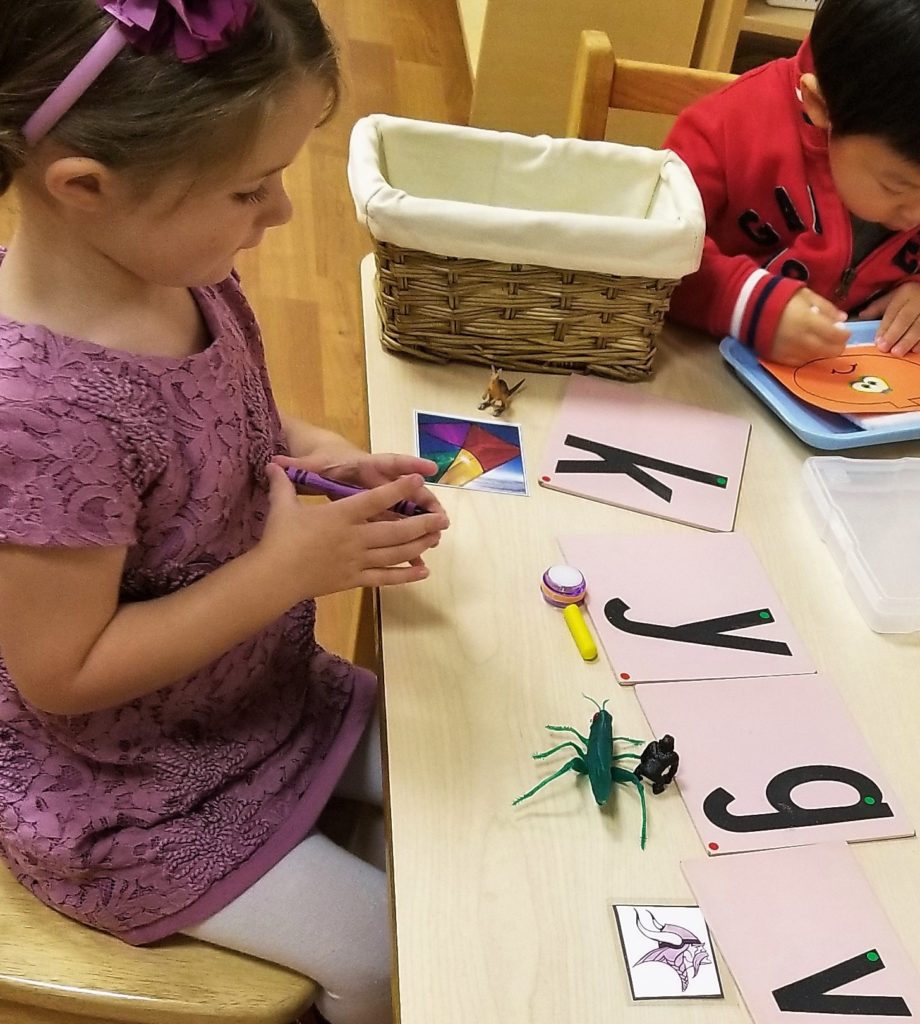The Montessori Method
What is the Montessori Philosophy?
The Montessori Philosophy can be summed up in four words…

If this sounds familiar it should! Over recent years many public and private educational programs have begun to see the necessity of educating children beyond academic requirements. The belief in educating the whole child is where Montessori begins and ends.
What do you mean by “the whole child”?
The “whole child” refers to each child’s individual needs and interests including intellectual. physical, social and emotional development. For Montessori, education is integral to the growth of the child. At the same time, it’s important to note that the philosophy is not restricted to education.
What is The Montessori Method?
The Montessori Method is shaped around the individual needs of the child. It is built upon three primary principles – observation, individual liberty, and preparation of the environment.
Montessori teachers are referred to as “guides” and spend a great deal of time observing the children in their environment. From the information gathered while observing, we plan individual lessons for each child. We also note areas that we need to address in the near future.
It is a common misconception of Montessori that children are allowed to do whatever they want. However, there is an underlying structure that is unseen to those unfamiliar with Montessori. In a Montessori environment, each child has the freedom (individual liberty), within clearly defined limits, to make choices. How much freedom each child has depends on a number of factors including but not limited to age, development, ability, behavior, interests, length of time spent in the environment. For example, A four-year-old returning to her Montessori environment for a second year will have more freedom of choice than a 4-year old that is new to the program. This is likely to change over time.
Most Montessori programs boast beautifully prepared environments. Visitors should expect to see child-sized furniture and low-lying shelves filled with beautiful materials designed specifically to accommodate a range of ages, abilities, and interests. Each child progresses at his or her own pace, according to their individual capabilities. Individual and group work is encouraged. No two Montessori environments are exactly alike, but each should consist of five main areas- Practical Life, Sensorial, Language, Math, and Science & Cultural.

PRACTICAL LIFE
Practical Life exercises are intended to teach children practical life experience. It is the most varied of all the areas because what is considered practical in one culture may not be practical in another. Practical life activities aim to teach children…
- To care for themselves, others and their environment;
- General social graces and courtesies;
- Coordination and control of movement;
- To pay attention to details;
- To appreciate order;
- To manage the responsibilities that come with independence.
LANGUAGE
Another misconception of Montessori is that children are not allowed to talk. Not only are children allowed to talk, they are encouraged to! Dr. Montessori observed that children rapidly acquire language from birth until approximately the age of six. Because much of the language a child learns is absorbed and not formally taught, it is imperative that the child is in a language-rich environment. The materials in the language area are designed to:
- Help the child develop a love for language
- Give order to the child’s natural inclination towards language
- Grow the child’s vocabulary
- Encourage conversations
Language concepts in the Montessori Language Area are typically taught using a strategy called the Three Period Lessons -association, recognition, and recall. The Three Period Lesson can be used to teach many new concepts.


MATH
Montessori math materials are renowned for their effectiveness. Dr. Montessori developed concrete materials to teach abstract concepts. Like the language materials, math materials break concepts down into their smallest components… making them easier for children to grasp.
Montessori math materials are very similar to materials found in the sensorial area. The materials are colorful, they make sounds, and can be taken apart and put back together. These materials are fun to work with and they help children develop a love for math.
To many of us adults, math is seen as a drudgery, but if presented properly, the child will grow to view math in a completely different (and more positive) way.
SCIENCE & CULTURAL
Montessori science and cultural lessons expose children to the various people, places, and animals around the world. Through these lessons, the child becomes aware that there is a big, wide world outside of themselves… and it is a world that should be treated with kindness and respect. We (often I learn right along with the children) learn about art, music, history, nature, different cultures, and… ourselves!



SENSORIAL
Sensorial materials are designed to develop the child’s senses. After all, it is through the senses (sight, sound, touch, hear and smell) that the child learns! Sensorial materials help to…
- Develop gross and fine motor skills;
- Expand vocabulary;
- Teach problem-solving;
Children tend to enjoy this area because many of the materials can be taken apart and put back together. It is not unusual to find older children, who have mastered the sensorial materials, return to them on occasion.
Children’s House at Holly Hill Montessori was the perfect fit for our son, as well as our family. The nurturing staff, balanced curriculum, and multifaceted approach foster a wonderful community of learners. We highly recommend Children’s House at Holly Hill’s Montessori environment to anyone seeking a loving and challenging Montessori program. We are very proud of our son’s many accomplishments and witnessed significant growth in the areas of social and academic development. He was very well prepared for his next step in the elementary level.
